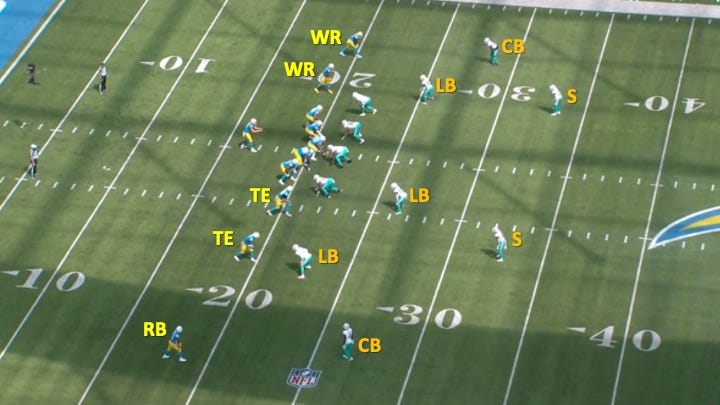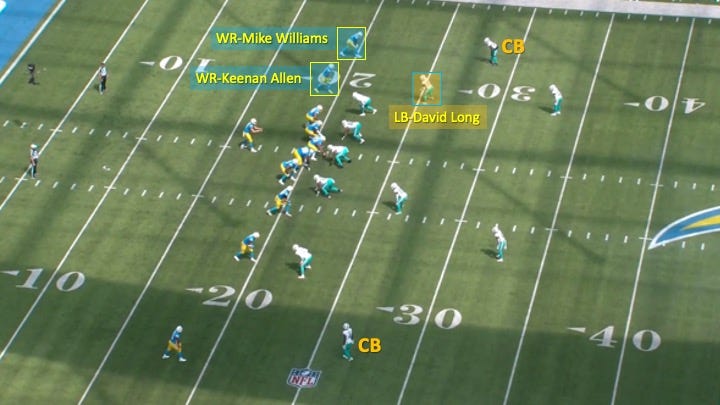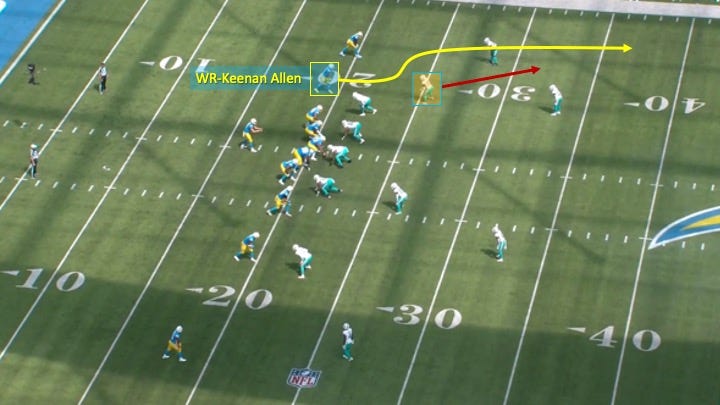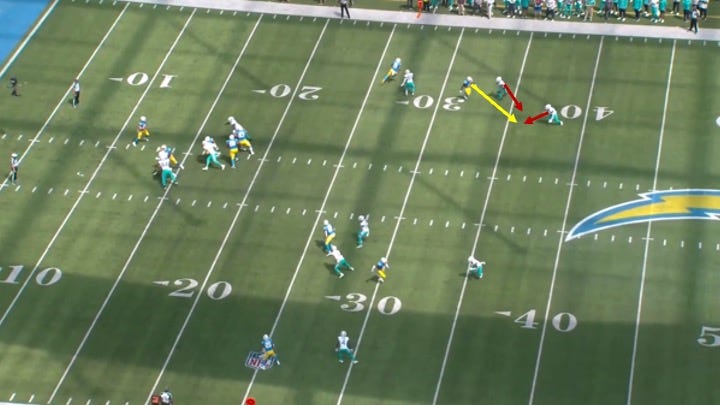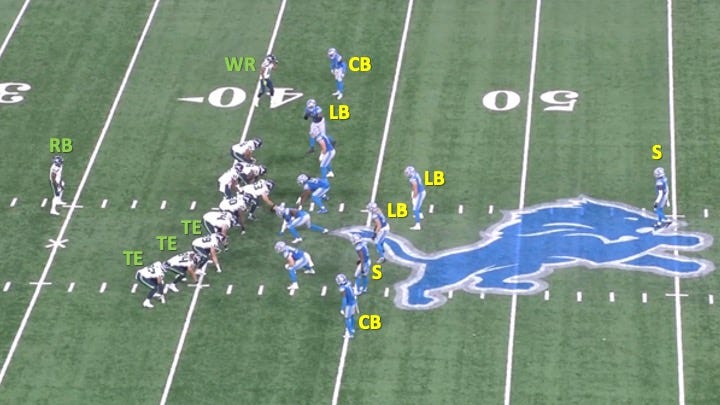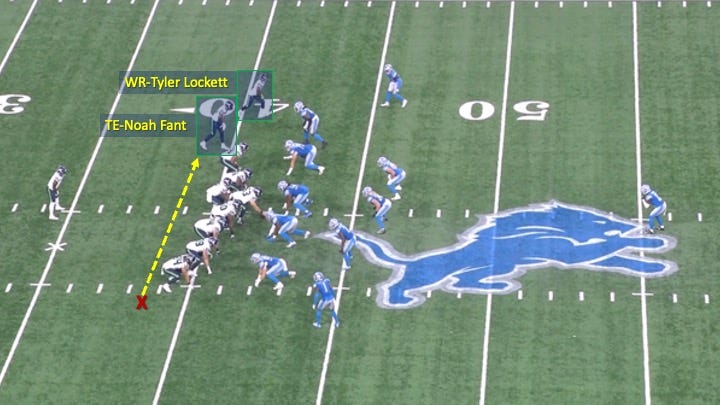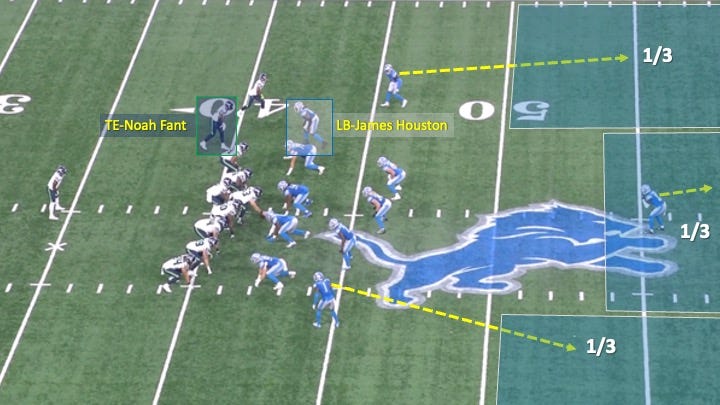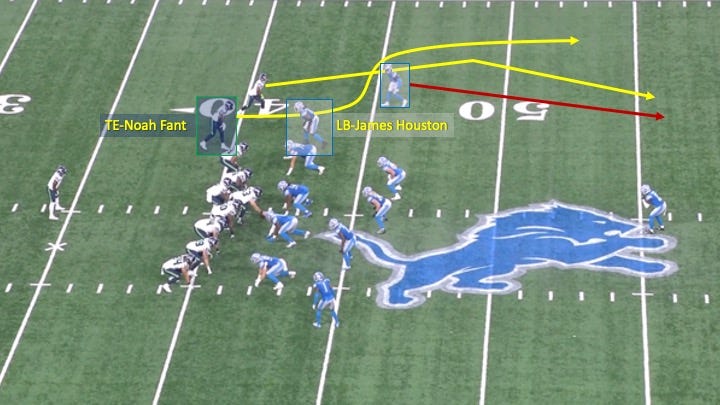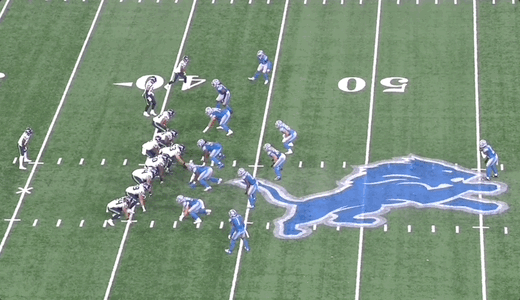Attacking with the Post-Wheel
One of the best route concepts in football is the post-wheel. It can be run against a multitude of coverages (man and zone), and there are so many different ways to dress it up, keeping the defense off the scent.
Below, I’m going to take you through some of the best ways NFL offenses have done so in recent years.
First, the purpose of the concept is to hit the wheel route. The post on the outside is generally meant to create an opening downfield by removing or occupying any deep defenders. So the mission for offensive coordinators is to utilize tactics that target the defender responsible for the wheel.
In Week 1 of the 2023 season for instance, the Chargers did so by using personnel and formation to create a favorable matchup to run the wheel against.
This was a 2nd-and-6, and the Chargers would come out in “12” personnel (1 RB, 2 TE). That got the Dolphins to match up in base personnel:
The Chargers aligned in an empty formation and put their two wide receivers (Keenan Allen and Mike Williams) to the same side of the field. The Dolphins did not have their cornerback from the other side of the formation follow. Instead, they matched up with linebacker David Long over Allen:
This was an indicator of zone coverage. Once Herbert saw it, he signaled something to his receivers on the outside. I’m guessing that told them to run the post-wheel:
Why the post-wheel? Because the Dolphins would be playing quarters coverage. And in this coverage, the underneath flat defender (Long) has to run with the #2 receiver (Allen) if he goes vertical, which Allen would do on this play:
When you can get a wide receiver running a vertical route against a linebacker, you take it.
Mike Williams’ post on the outside would remove the cornerback and occupy the deep safety, who would be forced to respond to the in-breaking route coming right at him:
Long was left in a 1-on-1 against Allen with no help. Herbert would hit him for 36 yards:
Tremendous design.
To access our FFR Playbook and over 60 breakdowns like this,
consider getting a Founding Member Subscription:
The Seahawks took a similar approach in Week 2 against the Lions, utilizing “13” personnel (1 RB, 3 TE) on 1st-and-10 to get Detroit to match up in base:
Seattle would motion tight end Noah Fant across the formation next to wide receiver Tyler Lockett. No one on the Lions followed:
Now the Seahawks’ two best pass-catching threats on the field were aligned to the same side of the formation, and quarterback Geno Smith knew that Detroit would likely be playing zone.
The big personnel and tight formation had the Lions wary of the run and likely led to them matching up in cover-3. That meant the flat defender, linebacker James Houston (who spends most of his time rushing the passer, not dropping into coverage), would be responsible for Fant if he went vertical:
Just like on the previous play, the post on the outside removed the deep defender, and that left the offense with a mismatch on the wheel route:
Seattle’s big personnel package helped make this matchup possible. The result was a 31-yard gain:
We can go back to previous seasons to see even more creative examples. Rams head coach Sean McVay has been one of the best at dressing this concept up in a variety of ways.
This next example was from L.A.’s 2021 NFC Divisional Playoff win against the Buccaneers. This time, a third route was added to the concept to put the flat defender in a high-low bind.
As you can see below, Van Jefferson would run the post, Odell Beckham Jr. would run the wheel, and Cooper Kupp would run to the flat off of pre-snap motion after being aligned in the backfield:


